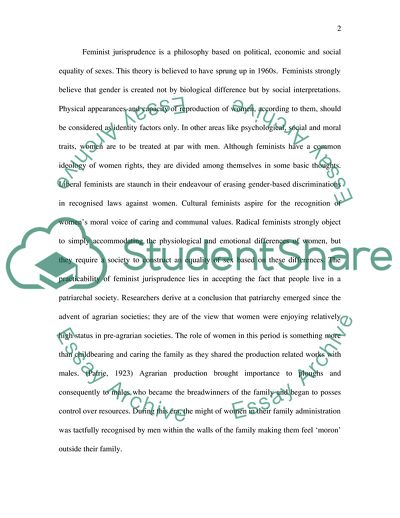Cite this document
(Feminist Jurisprudence Essay Example | Topics and Well Written Essays - 2000 words - 1, n.d.)
Feminist Jurisprudence Essay Example | Topics and Well Written Essays - 2000 words - 1. Retrieved from https://studentshare.org/law/1702961-jurisprudence-ethics-and-morality
Feminist Jurisprudence Essay Example | Topics and Well Written Essays - 2000 words - 1. Retrieved from https://studentshare.org/law/1702961-jurisprudence-ethics-and-morality
(Feminist Jurisprudence Essay Example | Topics and Well Written Essays - 2000 Words - 1)
Feminist Jurisprudence Essay Example | Topics and Well Written Essays - 2000 Words - 1. https://studentshare.org/law/1702961-jurisprudence-ethics-and-morality.
Feminist Jurisprudence Essay Example | Topics and Well Written Essays - 2000 Words - 1. https://studentshare.org/law/1702961-jurisprudence-ethics-and-morality.
“Feminist Jurisprudence Essay Example | Topics and Well Written Essays - 2000 Words - 1”. https://studentshare.org/law/1702961-jurisprudence-ethics-and-morality.


